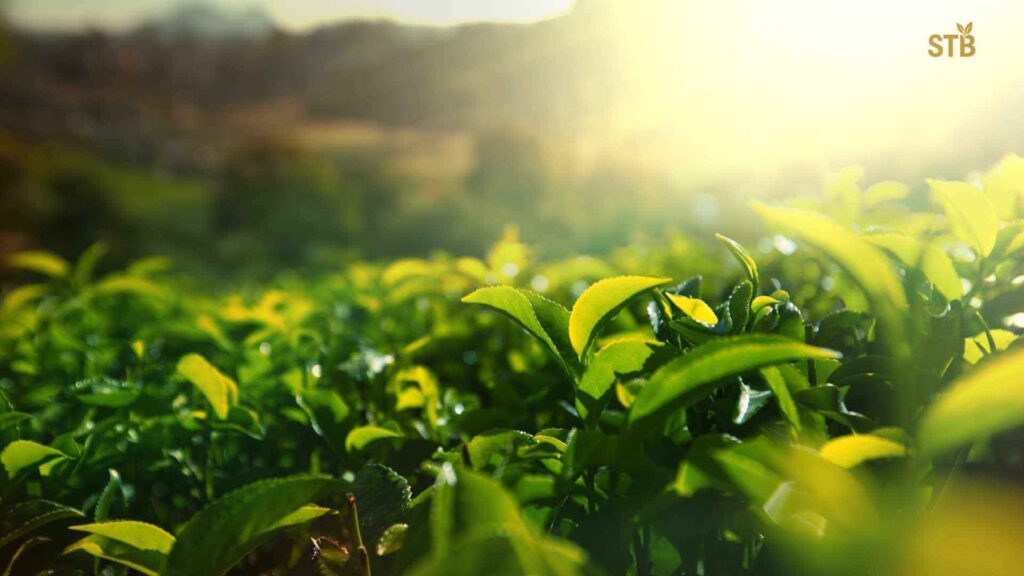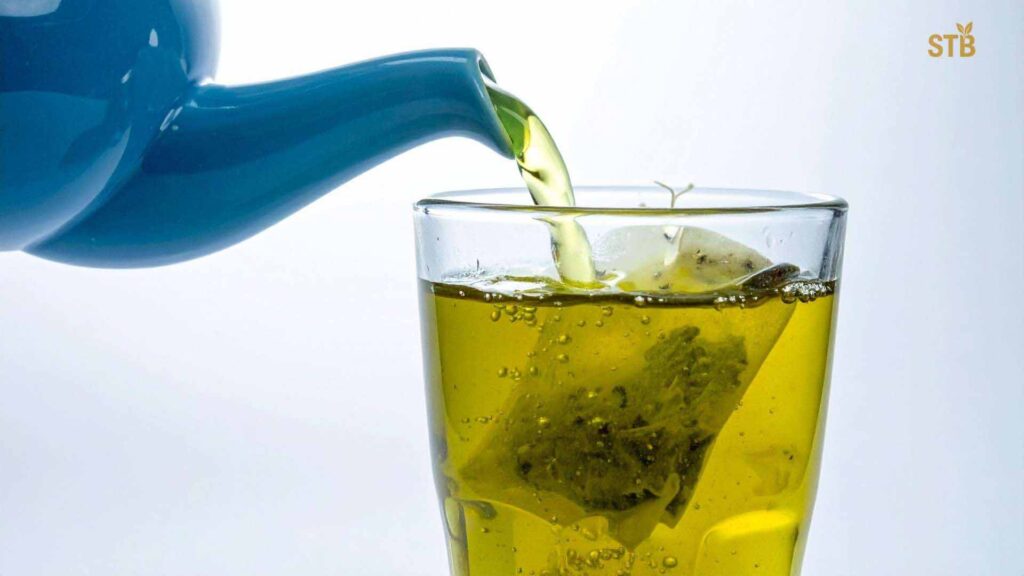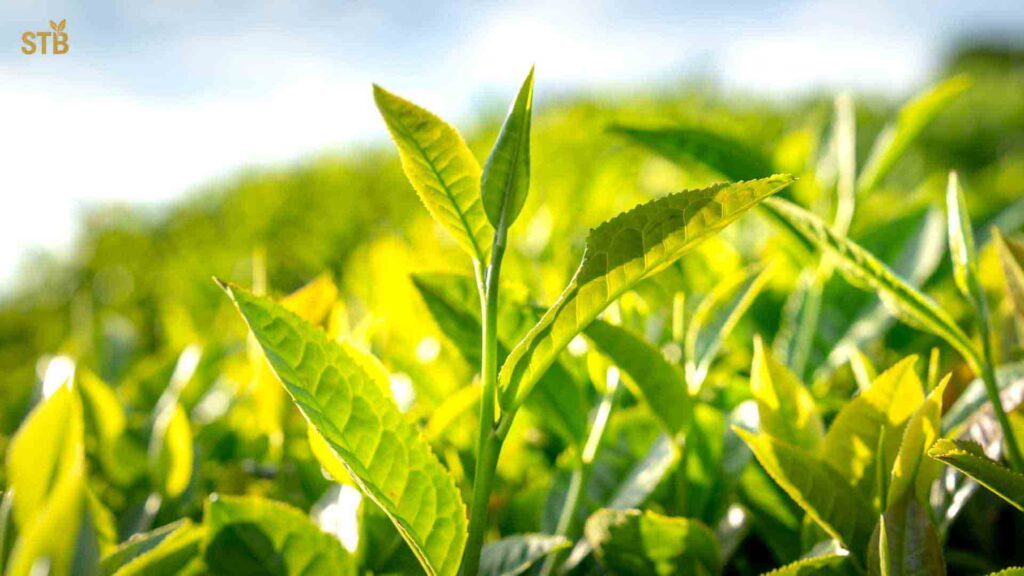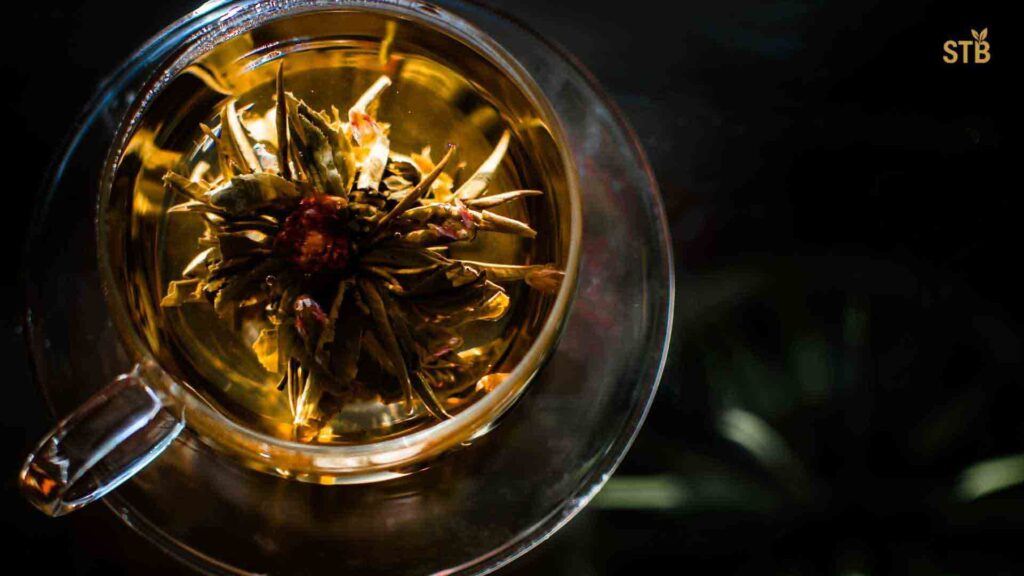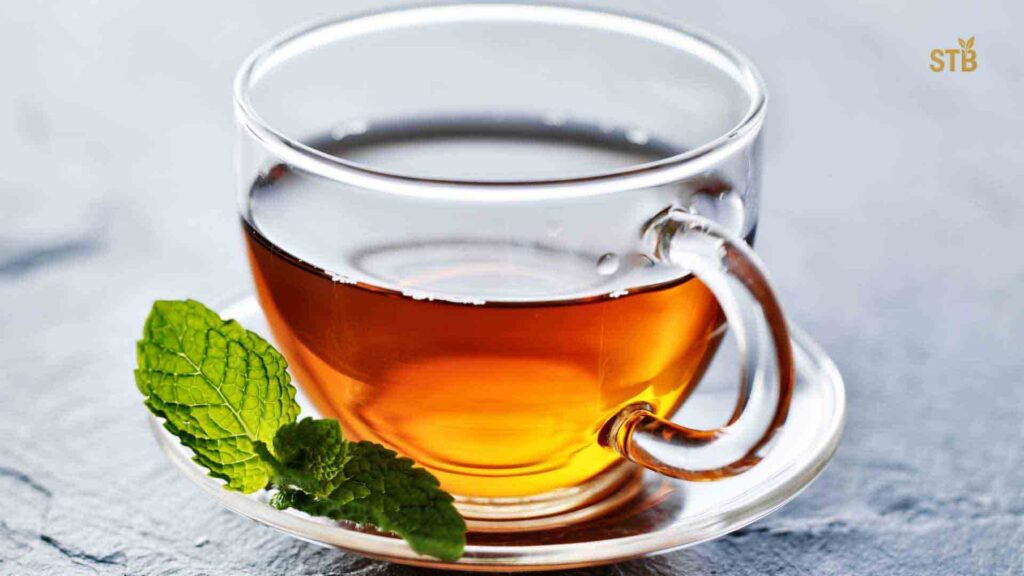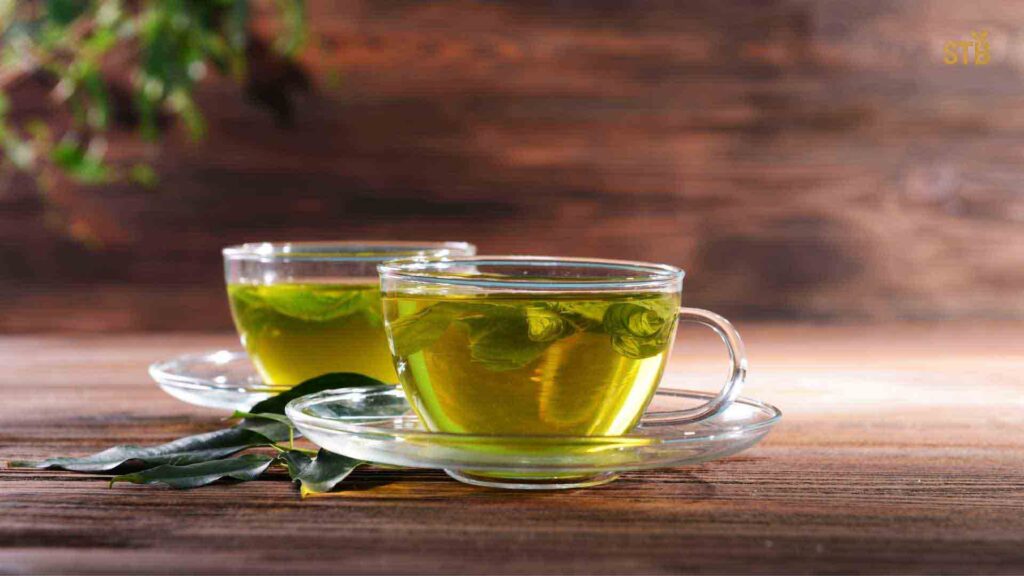Matcha is a unique form of green tea that has captured the attention of modern tea drinkers worldwide. Unlike traditional loose leaf tea, matcha is made from shade-grown leaves that are finely ground into a vibrant green powder. This specific cultivation process, which involves shading the plants for the last few weeks before harvest, preserves higher levels of theanine, an amino acid that gives matcha its signature umami and savory flavor.
Matcha is known for its versatility. It is traditionally whisked into hot water to create a frothy, energizing drink, but it has also become a popular ingredient in modern tea recipes like lattes and smoothies. This adaptability makes it a bridge between the traditional tea ceremony and the contemporary cafe culture, reflecting an evolution in how tea is consumed.
The bold color and flavor of matcha set it apart from other green teas and align with the visual and sensory experiences sought by a new generation of consumers.
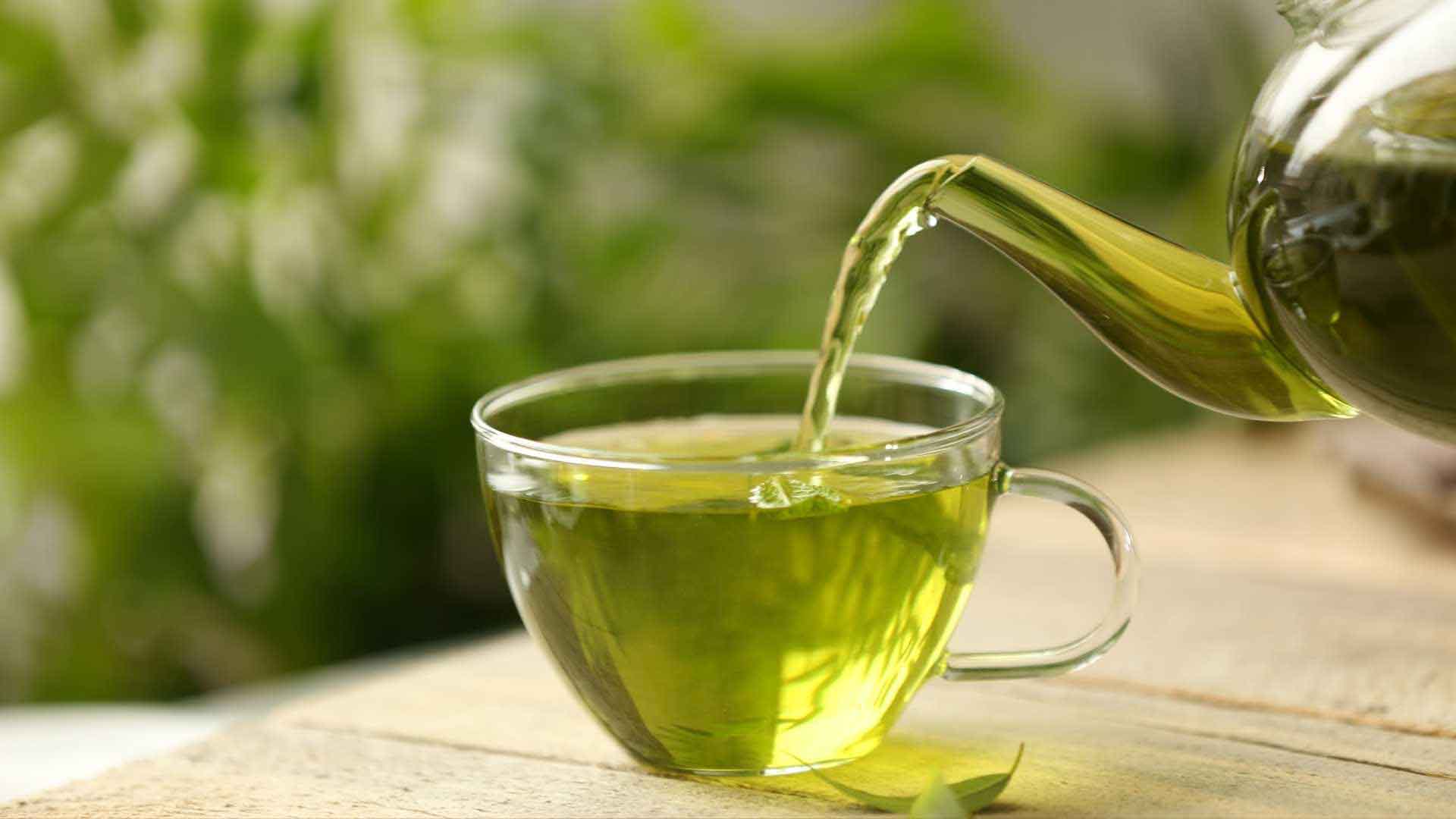
What is Matcha Green Tea?
Matcha is a special type of green tea where whole tea leaves are ground into a fine powder. This powder is whisked with hot water (or milk) to make tea. Because you consume the entire leaf, matcha delivers more nutrients and caffeine than regular green tea. Its rich, earthy taste and bright green color come from high chlorophyll content and beneficial compounds in the leaves.
The tea plants (Camellia sinensis) for matcha are shaded for weeks before harvest, boosting amino acids like L-theanine (for calm energy) and giving matcha its trademark vibrancy. In short, matcha is “a concentrated green tea with robust flavour and antioxidants”.
Most matcha used in beverages is culinary or ceremonial grade: ceremonial-grade matcha is very high quality and ideal for plain tea ceremonies, while culinary matcha is still nutritious and often used in lattes and desserts. Regardless of grade, matcha’s health profile comes largely from its catechin antioxidants (especially EGCG) and modest caffeine content.
As explained in STB Leaf’s tea guide, by consuming the whole leaf, matcha gives “more nutrients and caffeine, boosting energy levels and alertness”.
From Farm to Powder – Matcha Production
Matcha’s journey starts on tea farms. In Japan’s famed tea regions (like Uji, Kyoto), tea bushes destined for matcha are shaded 3–4 weeks before harvest. This lack of direct sunlight increases chlorophyll and L-theanine. After carefully hand-picking the youngest tea leaves, producers steam them to halt oxidation (preserving the green color), remove stems and veins, and dry the leaf material.
The dried leaves, called tencha, are then stone-ground into an ultra-fine, vibrant green powder – this is matcha. Stone-grinding is slow and labor-intensive but yields the smooth texture prized in high-quality matcha.
The image above shows dried loose-leaf tea and herbs – representative of tea after harvest. In contrast to steeping, matcha processing grinds these leaves into powder. By grinding the whole leaf, matcha retains all its nutrients and antioxidants, unlike brewed teas where some compounds are left behind in the leaves. This also means a smaller amount of matcha powder delivers more caffeine and catechins.
Farming practices matter: organic and eco-friendly cultivation keeps matcha pure. While Bangladesh’s tea industry focuses on black and green tea, premium imported matcha follows similar principles of freshness and quality. Just as STB Leaf’s farms harvest tea to preserve nutrients, matcha farms harvest and process leaves quickly to lock in flavor and health benefits.
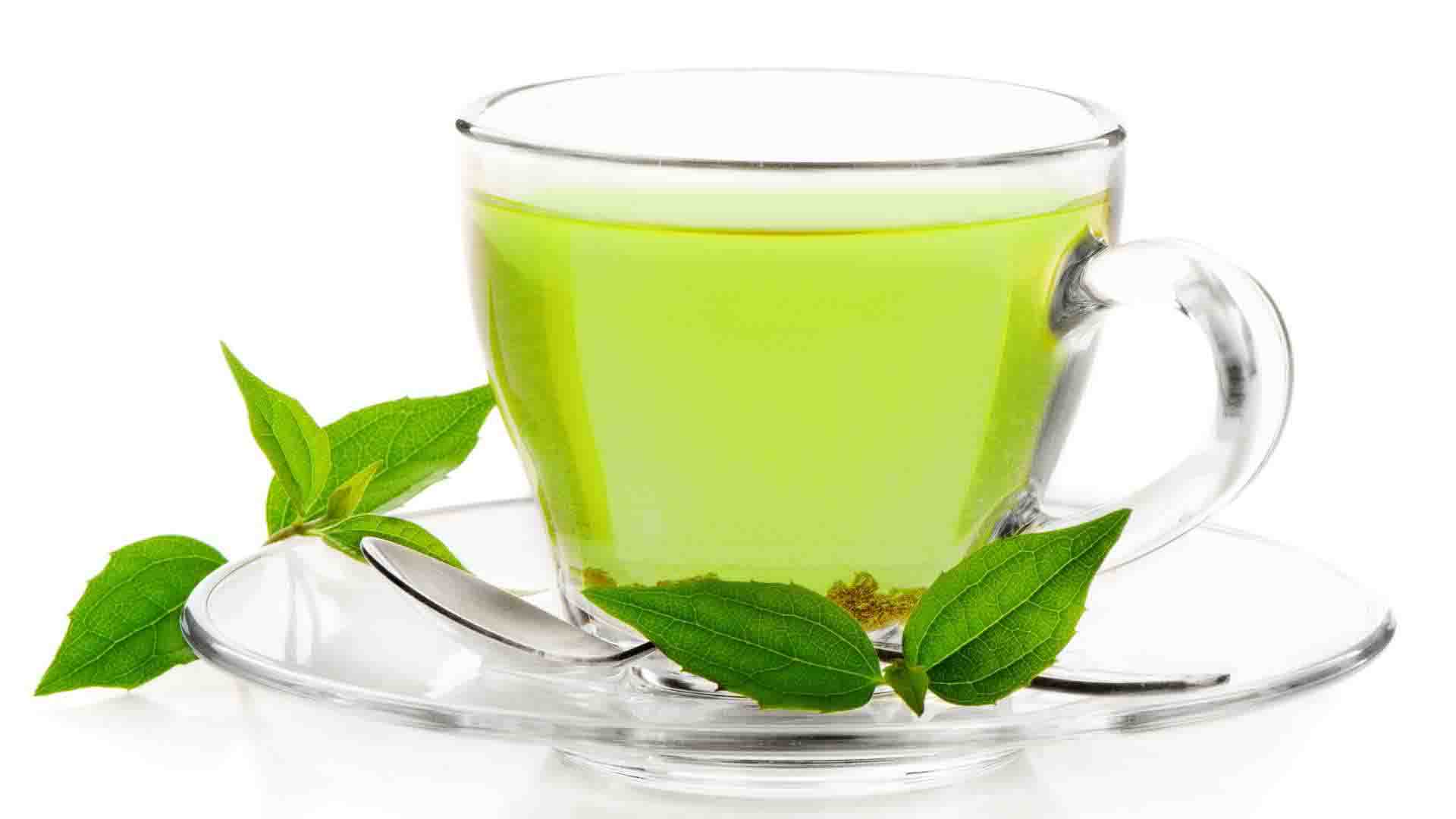
Preparing Matcha – Tea to Froth
Making matcha tea (the “froth” in our title) is a simple art. You need a bowl (traditionally a chawan), a bamboo whisk (chasen), and hot water around 75–80°C (not boiling). Here’s a basic preparation:
- Sift 1–2 teaspoons of matcha powder into your bowl (sifting breaks up clumps).
- Add a few ounces of hot water.
- Whisk vigorously in a zigzag motion for 15–30 seconds until a smooth green froth forms. Aim for a creamy layer of foam on top.
- Drink immediately, or add frothed milk for a matcha latte.
For lattes, one can use dairy or plant milk. A popular recipe is a Matcha Mint Latte, where mint and sweetener are added. As STB Leaf’s blog describes, “Matcha (finely powdered green tea) delivers a vibrant green color and earthy taste plus antioxidants.
Milk makes it creamy, and a touch of mint adds coolness”. The key is never to boil the water, and always whisk well – this releases the tea’s flavor and forms the signature froth.
Tip: Use high-quality matcha (bright, fine powder) for the best taste. For everyday use, culinary-grade matcha works well, while ceremonial-grade matcha is ideal for pure tea. Avoid pre-mixed powders with additives.
Health Benefits of Matcha Green Tea
Matcha’s benefits largely mirror those of green tea, but often amplified. Like green tea, matcha is rich in catechins (powerful antioxidants). In fact, STB Leaf notes that green tea is “rich in antioxidants like EGCG” which support heart and brain health. Because matcha uses whole leaves, it can provide up to three times more catechins than regular steeped green tea. These antioxidants help stabilize free radicals and may reduce the risk of chronic diseases.
Key reported benefits of matcha include:
- Antioxidant boost: Matcha is “very high in antioxidants”. Antioxidants like EGCG support cardiovascular health and may help prevent cell damage. Some studies even suggest the catechins in matcha can inhibit cancer cell growth in lab models. For example, one study found green tea catechins greatly reduced the progression to cancer in high-risk men.
- Calm energy & focus: Matcha contains moderate caffeine and a unique amino acid, L-theanine. The combination promotes “calm alertness” without jitters. Research shows L-theanine with caffeine improves attention and alertness. Many people drink matcha as a gentle, focused pick-me-up.
- Metabolism & weight management: The catechins in green tea (including matcha) can slightly boost metabolism and fat burning. Regular green tea drinkers often experience modest weight support over time. Matcha, with its concentrated catechins, is similarly touted for aiding fat metabolism.
- Heart health: Studies link green tea consumption to better cardiovascular markers. EGCG may help lower LDL cholesterol and blood pressure. Matcha’s high antioxidant content suggests it can contribute to heart health much like green tea.
- Brain health: The caffeine+L-theanine combo in matcha can improve memory and reaction time. Some research even links tea catechins to reduced risk of neurodegenerative diseases.
Overall, matcha offers all the well-known health benefits of green tea (heart support, anti-inflammatory effects, gentle energy) in a single cup. It’s important to note that most studies involve green tea; matcha-specific research is growing. But given matcha’s similar (or higher) levels of beneficial compounds, many of those benefits are expected to apply.
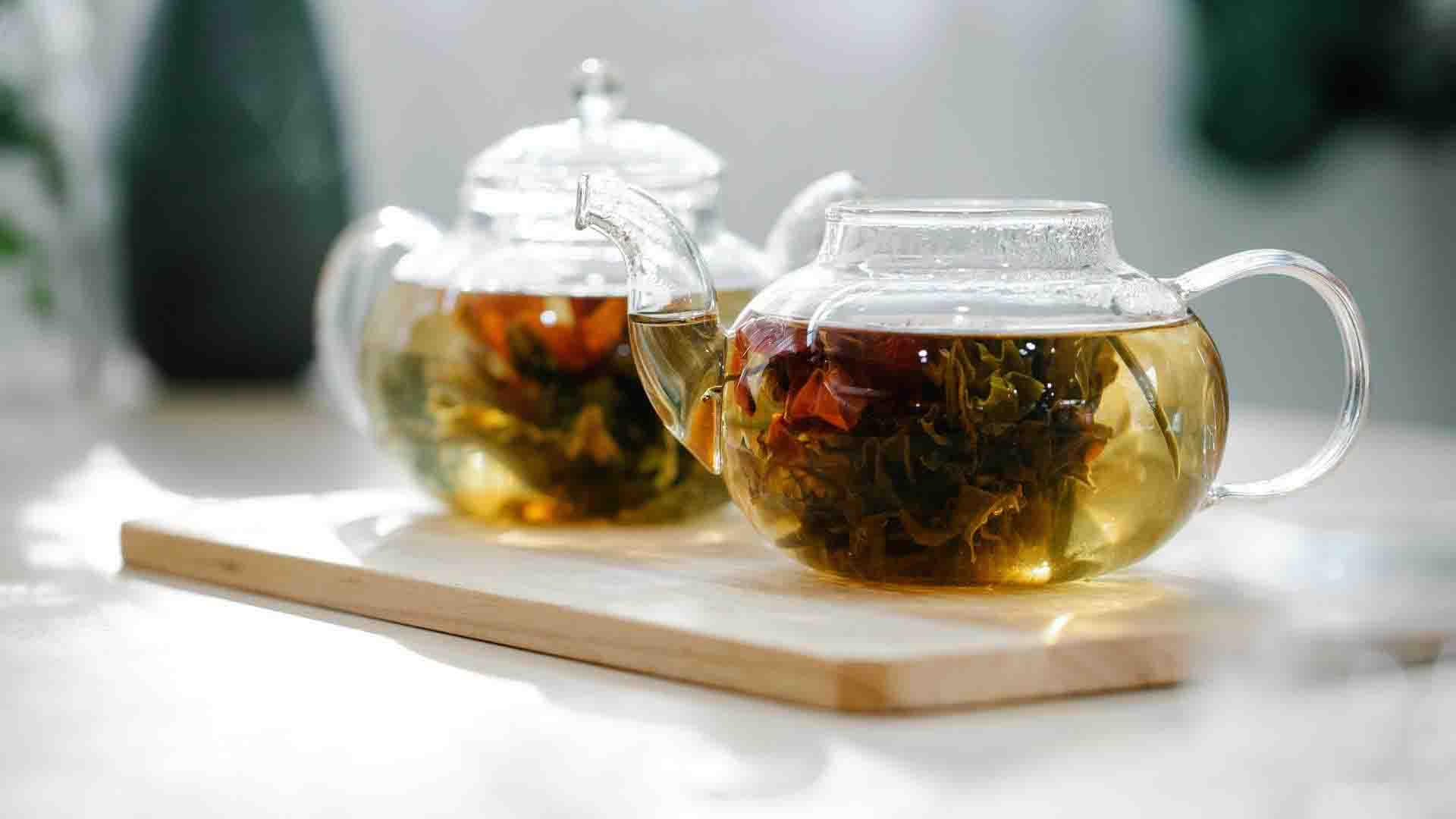
Matcha vs Other Teas
While matcha is a type of green tea, it differs from brewed green tea and from other tea categories:
- Matcha vs Loose-leaf Green Tea: Both come from Camellia sinensis, but matcha’s leaves are ground into powder. You ingest the whole leaf, whereas green tea steeping only infuses water. Thus, matcha typically delivers more caffeine and antioxidants per cup. Flavor-wise, matcha has a creamy, rich umami character; green tea (e.g. sencha) tastes lighter and grassier.
- Matcha vs Black Tea: Black tea is fully oxidized and has theaflavins rather than catechins. Both teas contain caffeine and L-theanine. STB Leaf notes green tea (matcha’s category) is rich in EGCG, while black tea has different antioxidants. In practice, matcha gives a gentler lift with more antioxidants, whereas black tea often provides a stronger caffeine kick.
- Matcha vs Herbal Teas: Herbal “tisanes” (like chamomile, hibiscus) contain no actual tea leaves and are caffeine-free. Matcha, by contrast, has caffeine and tea antioxidants. Herbal teas can target specific benefits (e.g. peppermint for digestion), but matcha’s benefits mirror those of true teas (catechins for metabolism, etc.).
- Matcha vs Coffee: Unlike coffee, matcha’s caffeine is buffered by L-theanine, often leading to a smoother, sustained energy. Matcha also provides antioxidants coffee lacks. Many drinkers swap coffee for matcha to avoid jitters.
In short, matcha stands out for its concentrated nutrients. As STB Leaf’s Green vs Black Tea guide explains, all tea types share healthful polyphenols, but matcha’s processing gives it a unique profile of high EGCG and L-theanine.
Green Tea Price in Bangladesh
Long-tail keyword attention: green tea price in BD. Green tea (including matcha) tends to cost more than local black tea. Prices vary by brand and form:
- Imported/Bagged Green Tea: Popular green tea brands (e.g. Lipton, Kazi & Kazi) sell 25–50 tea bags for about 250–500 BDT. For example, 25-pack Lipton green tea runs ~200 BDT, while specialty flavors may be 500 BDT or more.
- Local Green Tea Brands: Local green tea brands in supermarkets often price 20–50 bags around 70–450 BDT. Lower-end packs (20 bags) start ~70 BDT, while higher-quality loose or herbal mixes reach 400+ BDT.
- Loose-Leaf Green Tea: Premium loose-leaf green tea costs 500–1,000 BDT per 100g. These are high-grade teas in airtight pouches or tins.
- Matcha (Powder): Genuine ceremonial matcha is rarer and pricier. Expect 1,000+ BDT for 30–50g of true Japanese matcha in Bangladesh. Imported matcha brands vary widely in quality and price.
For example, Tea Shop BD lists a 100g Lipton Matcha (25 bags) at 500–550 BDT. In general, matcha powder is significantly pricier than standard green tea, reflecting its labor-intensive production and import costs.
Naturally, prices fluctuate. Always compare per-gram cost and ensure freshness. Buying from reputable vendors (like tea shops or STB Leaf’s curated selection) helps guarantee authentic quality.
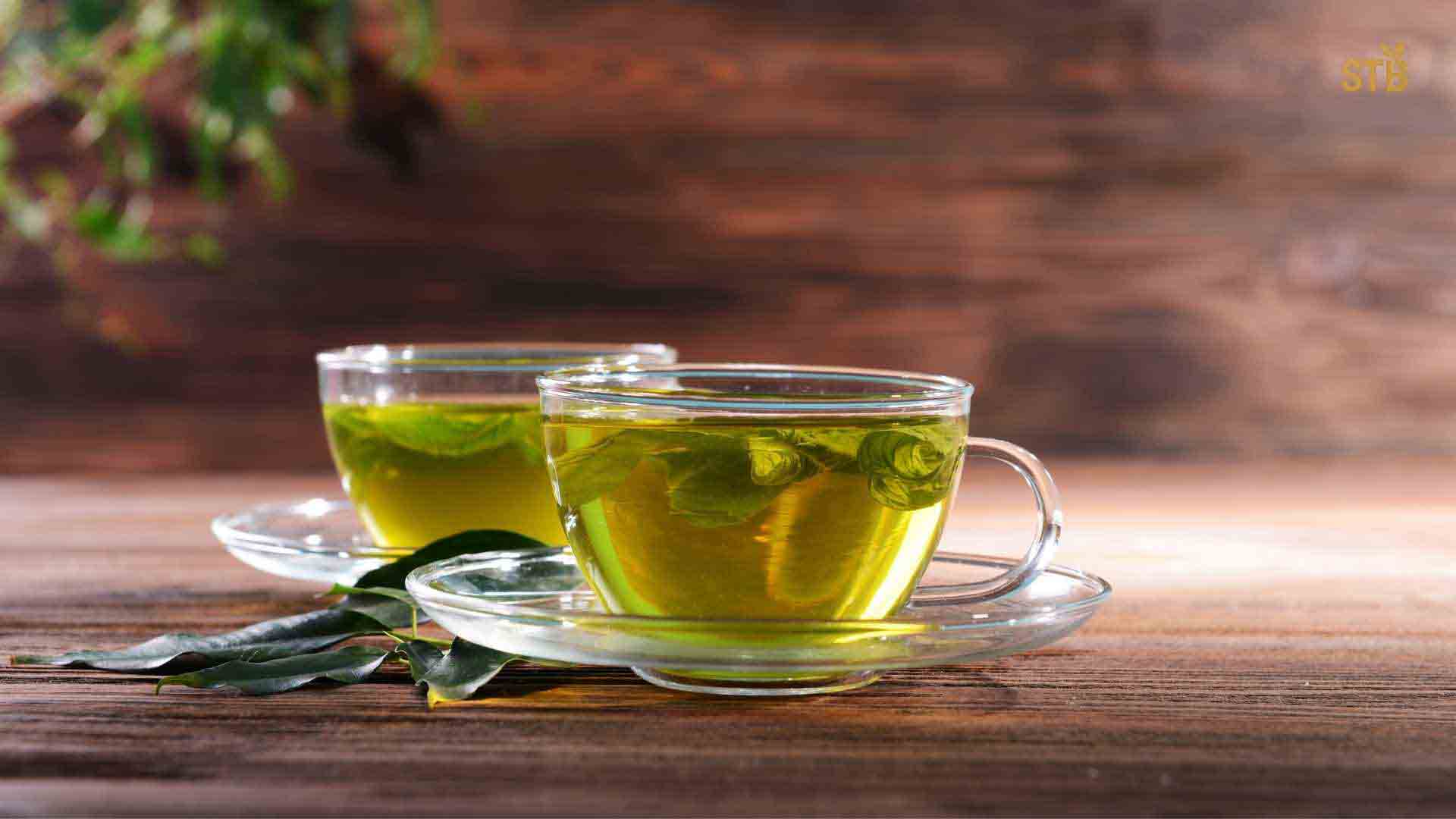
Brewing Tips and Usage
Beyond traditional tea, matcha’s fine powder makes it versatile. You can add matcha to smoothies, lattes, baked goods, and more. However, to fully enjoy its flavor and benefits:
- Use correct water temperature: Around 75–80°C. Boiling water will make matcha bitter.
- Whisk well: Use a bamboo whisk or electric frother for a smooth, frothy consistency.
- Experiment with dairy: Whole milk, almond or oat milk all make good matcha lattes. Froth the milk and pour slowly over whisked matcha for layered drinks.
- Sweeten lightly: A bit of honey or sugar can complement matcha, but many prefer it unsweetened.
- Drink immediately: Matcha can settle at the bottom, so enjoy it right after whisking.
For creative inspiration, STB Leaf’s blog features a Matcha Mint Latte recipe. It blends matcha with milk and mint for a refreshing twist. Such recipes highlight how matcha’s rich green color and antioxidants can be fused into modern drinks.
Ready to explore the world of premium teas? Visit STB Leaf’s online store to shop high-grade Bangladeshi teas – including green and herbal varieties – for your perfect cup.
We offer fresh, authentic teas that embody the flavors and healthful qualities of Bangladesh’s tea gardens. Whether you’re brewing matcha or enjoying black cha, STB Leaf brings you quality you can trust. Start your matcha journey today and savor the vibrant taste from farm to froth!

FAQs
Q1: What is matcha green tea?
Matcha is a fine powdered green tea made by grinding whole, shade-grown tea leaves into a bright green powder. To drink matcha, you whisk the powder with hot water or milk. This differs from regular green tea, where leaves are steeped and then discarded.
Q2: How is matcha different from ordinary green tea?
The key difference is consumption of the whole leaf. Matcha uses powdered leaves, so you ingest all the leaf’s nutrients and caffeine. A cup of matcha typically has more antioxidants and a higher caffeine content than an equal serving of brewed green tea. Matcha also has a creamier texture and richer flavor.
Q3: How do I make matcha tea?
Sift 1–2 teaspoons of matcha powder into a bowl. Add ~2 ounces of hot water (about 75–80°C). Using a bamboo whisk, whisk briskly in a “W” motion until frothy. (You can also add frothed milk for a latte). Drink it immediately while frothy. Avoid boiling water, as it can make matcha bitter.
Q4: What are the health benefits of matcha green tea?
Matcha shares the health benefits of green tea – it’s high in antioxidants (EGCG), supports metabolism, heart health, brain function, and provides a gentle energy lift. Because matcha is concentrated, its effects can be stronger. For example, antioxidants in matcha help neutralize free radicals, and its caffeine+L-theanine combo can boost alertness without jitters.
Q5: Does matcha contain caffeine?
Yes. Matcha has caffeine similar to green tea but usually higher, because you consume the whole leaf. A typical serving might have the caffeine of 1–2 cups of green tea. However, L-theanine in matcha can temper the “jolt,” providing calm focus.
Q6: Can matcha help with weight loss?
Matcha contains catechins that may slightly increase metabolism and fat oxidation. Many people add matcha to their diet for weight management. It’s no magic bullet, but as part of a healthy lifestyle, matcha’s antioxidants can support metabolic rate. Always pair with good diet/exercise.
Q7: How much matcha should I drink daily?
Generally, 1–2 cups (about 1–2 teaspoons of powder total) per day is safe for most people. This provides beneficial compounds without excessive caffeine. People sensitive to caffeine might stick to 1 cup. Too much matcha can overload you with caffeine and catechins (very high doses can stress the liver).
Q8: Where can I buy good matcha in Bangladesh?
True Japanese matcha can be found at specialty tea shops or online retailers. Look for ceremonial or organic matcha from Japan. Be wary of impostor “matcha” mixes. For local options, STB Leaf offers quality green teas, and we’re exploring premium matcha imports. Always check for bright green color and a single-ingredient listing (just tea).
Q9: Is matcha safe for everyone?
Matcha is generally safe for adults in moderate amounts. Because of its caffeine, pregnant or nursing women should consult a doctor before drinking matcha. Those with iron-deficiency anemia might avoid high intake, as green tea can slightly reduce iron absorption. Children and teens can have matcha in small amounts, but their caffeine tolerance varies.
Q10: How do I choose quality matcha?
High-grade matcha should be vibrant green, very fine and silky. Ceremonial-grade matcha is for pure tea drinking (no additives) and has a delicate flavor. Lower-grade matcha (culinary) is still green and nutritious but usually used in lattes or recipes. Check the price per gram – very cheap “matcha” is often blended with fillers. Also look at reviews: quality matcha smells fresh and “green,” and tastes smooth, not bitter.
Authoritative tea guides and STB Leaf’s blog (e.g. “Green Tea Revolution”, matcha recipes, and brewing tips). External health sources confirm matcha’s antioxidant and cognitive benefits. Data on green tea pricing in Bangladesh is drawn from local market research.


